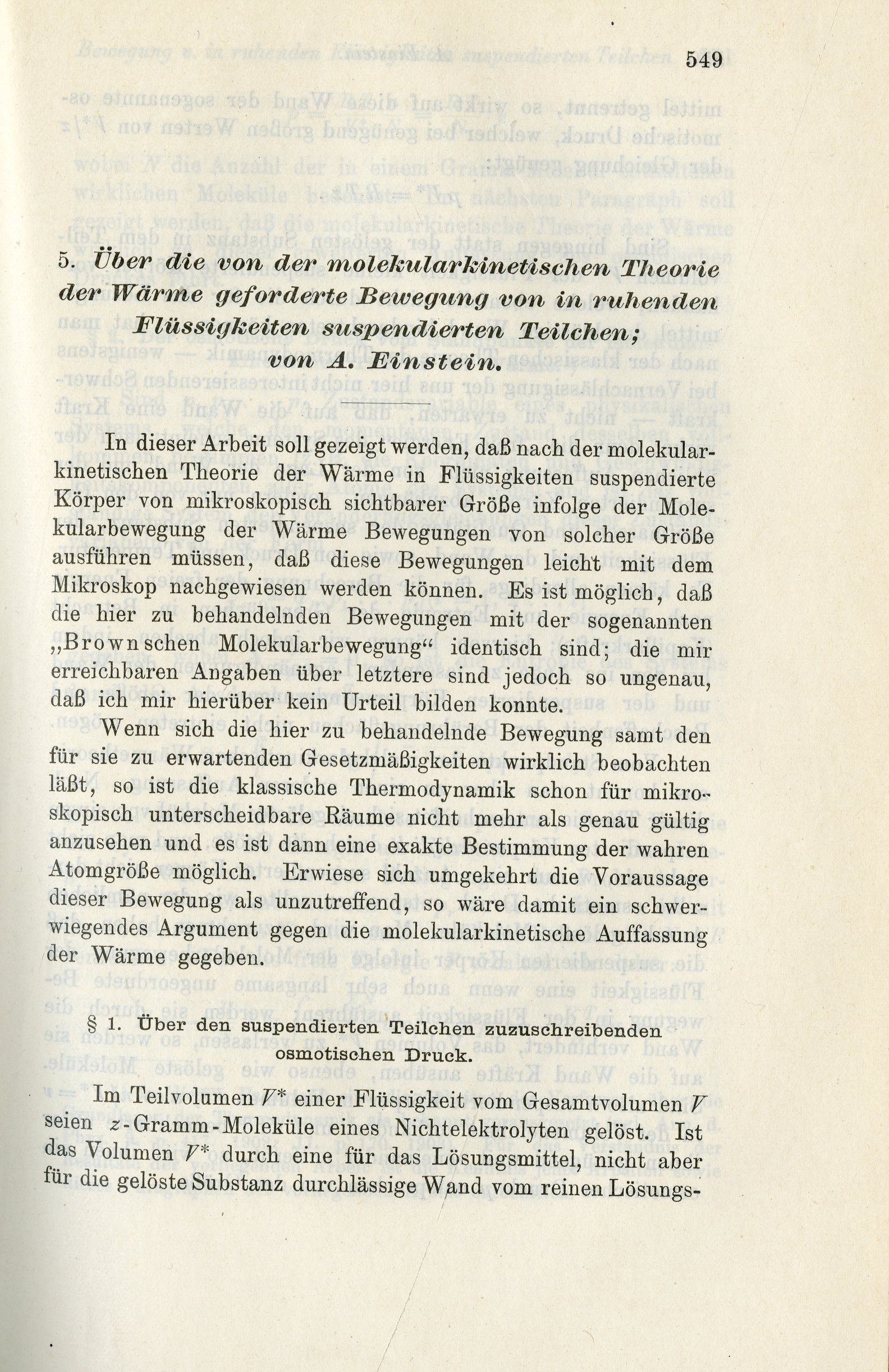Einstein’s landmark paper on Brownian motion
EINSTEIN, ALBERT. “Ueber die von der molekularkinetischen Theorie der Waerme geforderte Bewegung von in ruhenden Fluessigkeiten suspendierten Teilchen” in Annalen der Physik, 4. Folge, 17 Band, No. 8
Leipzig, 1905
Complete issue removed from bound volume. Very good.
FIRST EDITION. “On the Movement of Small Particles Suspended in a Stationary Liquid Demanded by the Molecular Kinetic Theory of Heat” appears here on pp. 549-560. This landmark paper on Brownian motion is one of the three great papers from 1905, Einstein annus mirabilis.
Although most physicists and chemists accepted the idea of atoms as a useful concept in 1905, many still questioned whether they actually existed. Einstein later claimed that “my major aim in [this research] was to find facts which would guarantee as much as possible the existence of atoms of finite size.”
In 1827, botanist Robert Brown had used a microscope to look at dust grains floating in water. He found that the floating grains were moving about erratically, a phenomenon that became known as “Brownian motion.” In this paper Einstein proved the reality of these molecules and their motions by producing the first statistical physics analysis of Brownian motion. French physicist Jean Perrin used Einstein’s results to experimentally determine the mass, and the dimensions, of atoms, thereby conclusively verifying Dalton’s atomic theory, first proposed in 1808.
“Eventually the experimental evidence supporting Einstein’s theory of Brownian motion became so compelling that the naysayers were forced to accept the existence of material atoms. His fundamental work on applying statistical methods to the random motions of Newtonian atoms also led to his insights into the photo electric effect, through the discovery of a critical connection between his statistical theory of heat and the behavior of electromagnetic radiation. This was the first step in his goal to unify the two fields” (APS).
$3,500



